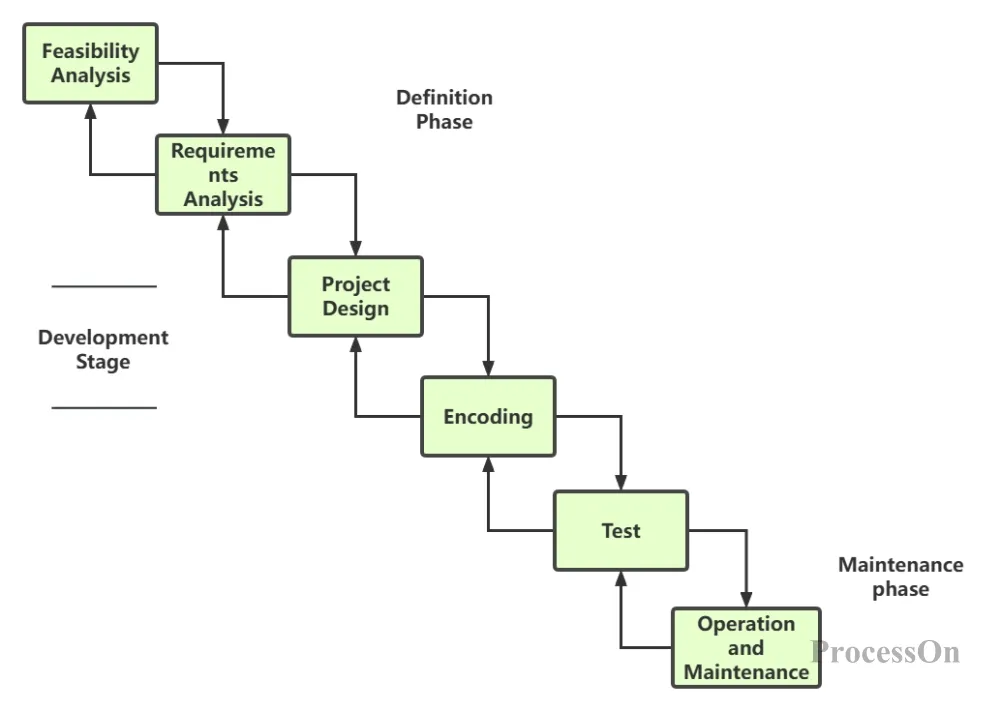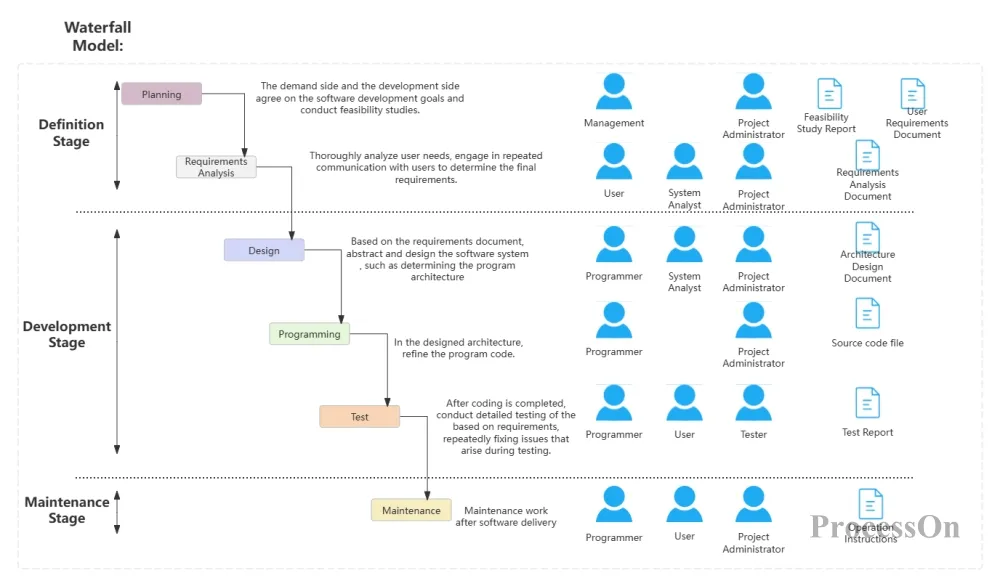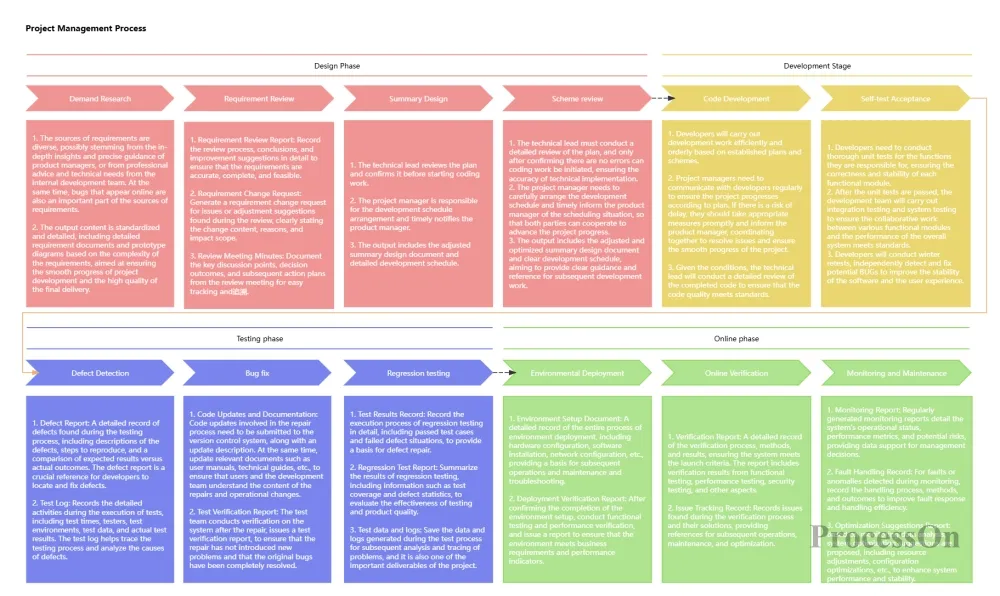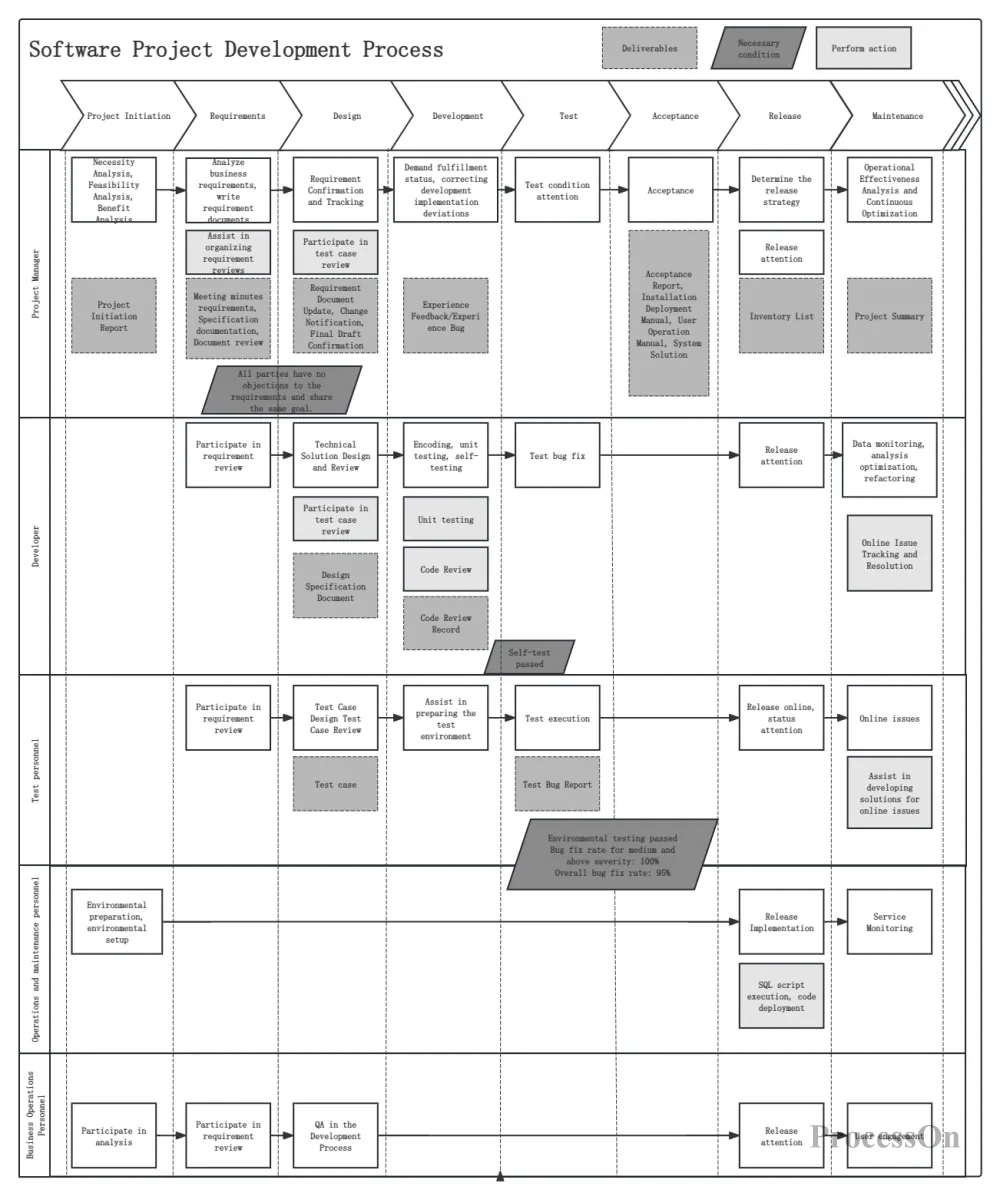Waterfall life cycle model : It is a linear SDLC model that defines the activities of the software life cycle as several stages connected in a fixed order, including six basic activities: problem definition and planning, requirements analysis, software design, program coding, software testing, and operation and maintenance. The waterfall life cycle model has sequence and dependency, and ultimately results in a software product.

SDLC-Waterfall Lifecycle Model
1. Definition Phase
The main task of the definition phase is to clarify the requirements and goals of the software and provide a basis for subsequent development. This phase includes the following sub-phases:
Problem definition: Clarify what problem the software system to be built will solve and what goals you expect to achieve.
Feasibility study: An assessment of the technical, economic and social feasibility of a project to determine whether it is worth proceeding.
Requirements analysis: Gain an in-depth understanding of user needs, generate detailed requirements specifications, and clarify what the target system should do.
2. Development Phase
The development phase is the core part of the software life cycle. It carries out system design and coding implementation based on the results of demand analysis, and ensures the quality and performance of the software through testing. This phase includes the following sub-phases:
System design: Design the overall architecture and module division of the software, and construct the target system.
Detailed design: Carry out detailed design for each module, including interface, algorithm and data structure, etc.
Coding: Write program code according to the design documents and convert the software design results into program code that can be accepted by the computer.
Testing: Perform unit testing, integration testing, and system testing on the software to ensure that the quality, performance, and security of the software meet the requirements of the requirements specification.
3. Operation and maintenance phase
The operation and maintenance phase is a long-term process after the software is delivered to the user. The main task is to ensure the normal operation and continuous update of the software to meet the long-term needs of users. This phase includes the following tasks:
Deployment: Deploy the software to the user environment so that it can run normally.
User training: Provide users with necessary training and support so that they can use the software proficiently.
Bug fixing: Fix errors and vulnerabilities in the software in a timely manner to ensure the stability and security of the software.
Performance optimization: Optimize and upgrade software performance based on user feedback and actual needs.
New function addition: Add new functions and features to the software based on user needs and market changes.

Projects with clear and stable requirements: The waterfall life cycle model requires that requirements and goals be clearly defined at the beginning of the project, so it is suitable for projects with relatively stable requirements and few changes.
Projects with high quality and formality requirements: Fields such as aerospace, medical devices, and nuclear power industries require detailed documentation and review to comply with industry norms and standards. The sequential nature of the waterfall lifecycle model helps teams produce high-quality and detailed documentation.
Large system projects: These projects usually contain many complex components and modules, which require detailed planning and design. The waterfall lifecycle model can help project teams to conduct comprehensive planning in the early stages of development to ensure that all parts can be integrated in an orderly manner.
Projects with low technical difficulty and low risk: For relatively simple projects with low technical difficulty, the waterfall lifecycle model can help the team to move forward step by step. Low project risk usually means that there is mature technical support, and the project team has rich experience and in-depth understanding of these technologies.

SDLC-Project Management Process Waterfall Model Diagram
Easy to understand and use: The waterfall life cycle model is a simple and intuitive project management method that is easy for team members to understand and use.
Clear phases and tasks: The waterfall life cycle model divides the project into clear phases and tasks, which is conducive to the division of labor among team members and improves work efficiency.
Easy to control and manage: After each stage is completed, there are clear deliverables and acceptance criteria, which facilitates the project manager to control and manage and ensure that the project proceeds as planned.
Documentation: The waterfall lifecycle model emphasizes the role of documentation, and detailed documentation is generated at each stage, which helps ensure that the development team and stakeholders are aligned on project goals.
Lack of flexibility: The waterfall lifecycle model requires that each stage be completed in a fixed order. If the requirements change, the entire project plan will need to be significantly adjusted, increasing risks.
Difficulty in adapting to changes in requirements: Since the waterfall lifecycle model is linear, once requirements change at a later stage, it may be necessary to start over from scratch, leading to project delays and increased costs.
Difficulty in early defect detection: In the waterfall lifecycle model , defects are often detected only in the late stages of development, which can lead to costly rework and repair efforts.
Long development time: The linear structure of the waterfall lifecycle model results in long development times, where each phase must be completed before moving on to the next phase, which can slow down the progress of the project.
Limited customer feedback: In the waterfall lifecycle model , customers don’t see the finished product until late in the development phase, which can result in mismatches with expectations and require expensive revisions.

Waterfall Model - Software Development Process
summary, the waterfall lifecycle model is suitable for projects with clear and stable requirements and high quality and formality requirements. However, for projects with frequent changes in requirements, high risks or high complexity, the waterfall lifecycle model may not be the best choice. In practical applications, you can choose a suitable project management method based on the characteristics and requirements of the project. If you want to learn about other methods or models in the software development lifecycle, you can enter SDLC ( Software Development Life Cycle ) Complete Guide, Concepts, Models, Drawing Tutorials to learn more.
The above waterfall model diagrams are all created using ProcessOn . If you want to draw relevant flow charts for your project, you can use ProcessOn.